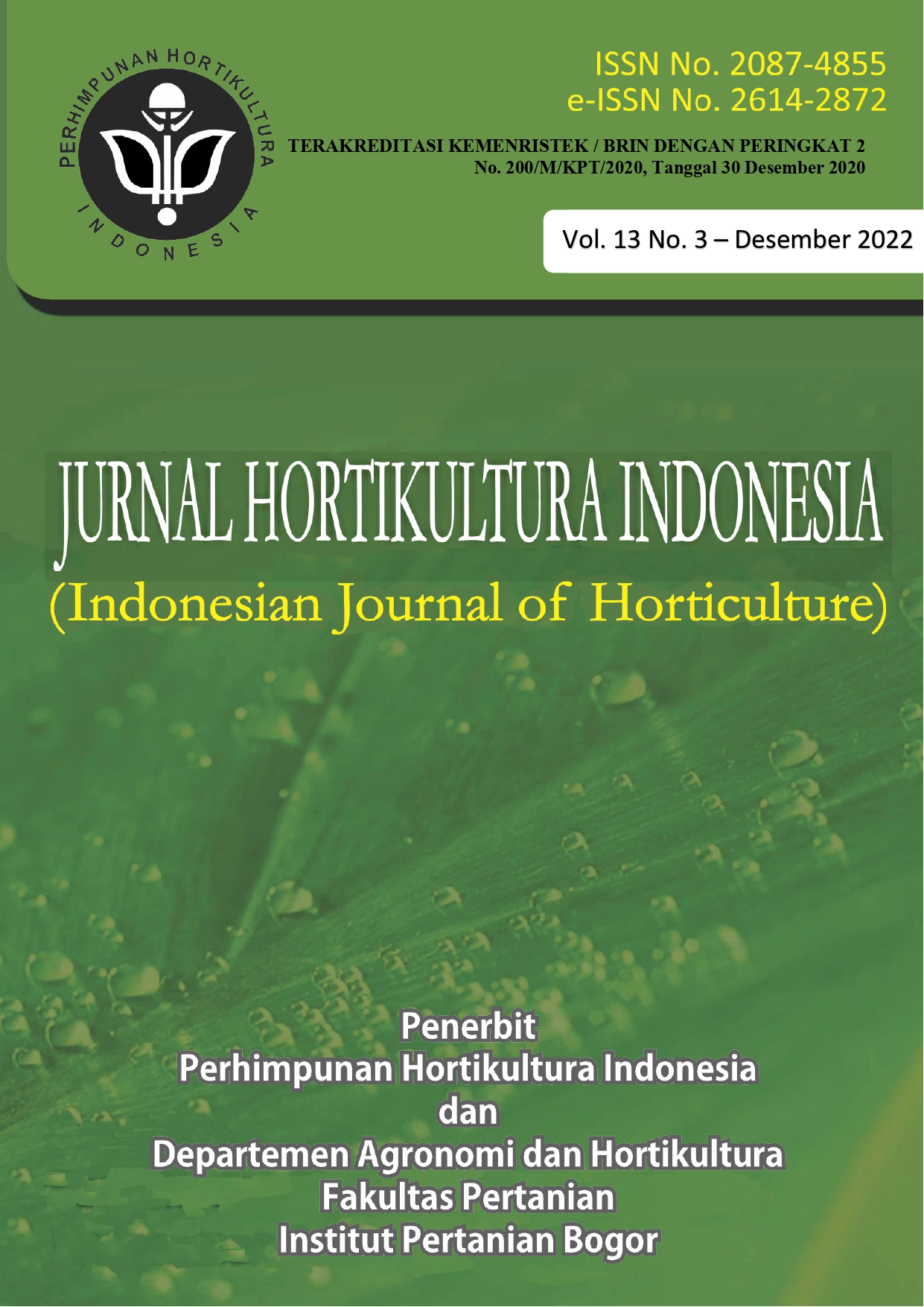Role Of Mycorrhiza-Trichoderma and Anorganic Fertilizer on Growth, Yield and Vitamin C of Cauliflower
Abstract
Cauliflower is a potential vegetable commodity because it contains vitamins and minerals. Cauliflower cultivation needs to be expanded to marginal lands such as Ultisol. The aim of this research was to determine the dosage of mycorrhiza-Trichoderma with reduced anorganic fertilizer on the growth, yield, and vitamin C content of cauliflower in ultisol. This research was carried out on experimented pots using a factorial completely randomized block design, and three replications. The first factor is mycorrhiza+Trichoderma combinations is 0 g + 0 g, 10 g + 10 g, and 20 g + 20 g; the second factor is anorganic fertilizer reduction (urea, SP36, and KCl) from the recommended dosages is 0%, 25%, and 50%. The data were analyzed using F-test and DMRT. The research results showed that 20 g mycorrhiza+20 g Trichoderma plant-1 increased the infection percentage of mycorrhiza up to 56.7% when compared to 10 g mycorrhiza-10 g Trichoderma. The best combination with the highest plants was obtained without mycorrhizal-Trichoderma with a 25% reduction of anorganic fertilizer, while the highest dry root weight on 10 g mycorrhiza + 10 g Trichoderma with 50% anorganic fertilizer. The highest yield (curd) was obtained at 20 g mycorrhiza + 20 g Trichoderma with a 25% reduction in anorganic fertilizer, while the highest vitamin C content was obtained at 20 g mycorrhiza + 20 g Trichoderma with a 50% reduction of anorganic fertilizers.
Keywords: biofertilizer, vegetables, cultivation, marginal land
Downloads
You are free to:
- Share — copy and redistribute the material in any medium or format for any purpose, even commercially.
- Adapt — remix, transform, and build upon the material for any purpose, even commercially.
- The licensor cannot revoke these freedoms as long as you follow the license terms.
Under the following terms:
- Attribution — You must give appropriate credit, provide a link to the license, and indicate if changes were made. You may do so in any reasonable manner, but not in any way that suggests the licensor endorses you or your use.
- ShareAlike — If you remix, transform, or build upon the material, you must distribute your contributions under the same license as the original.
- No additional restrictions — You may not apply legal terms or technological measures that legally restrict others from doing anything the license permits.
Notices:
You do not have to comply with the license for elements of the material in the public domain or where your use is permitted by an applicable exception or limitation.
No warranties are given. The license may not give you all of the permissions necessary for your intended use. For example, other rights such as publicity, privacy, or moral rights may limit how you use the material.













